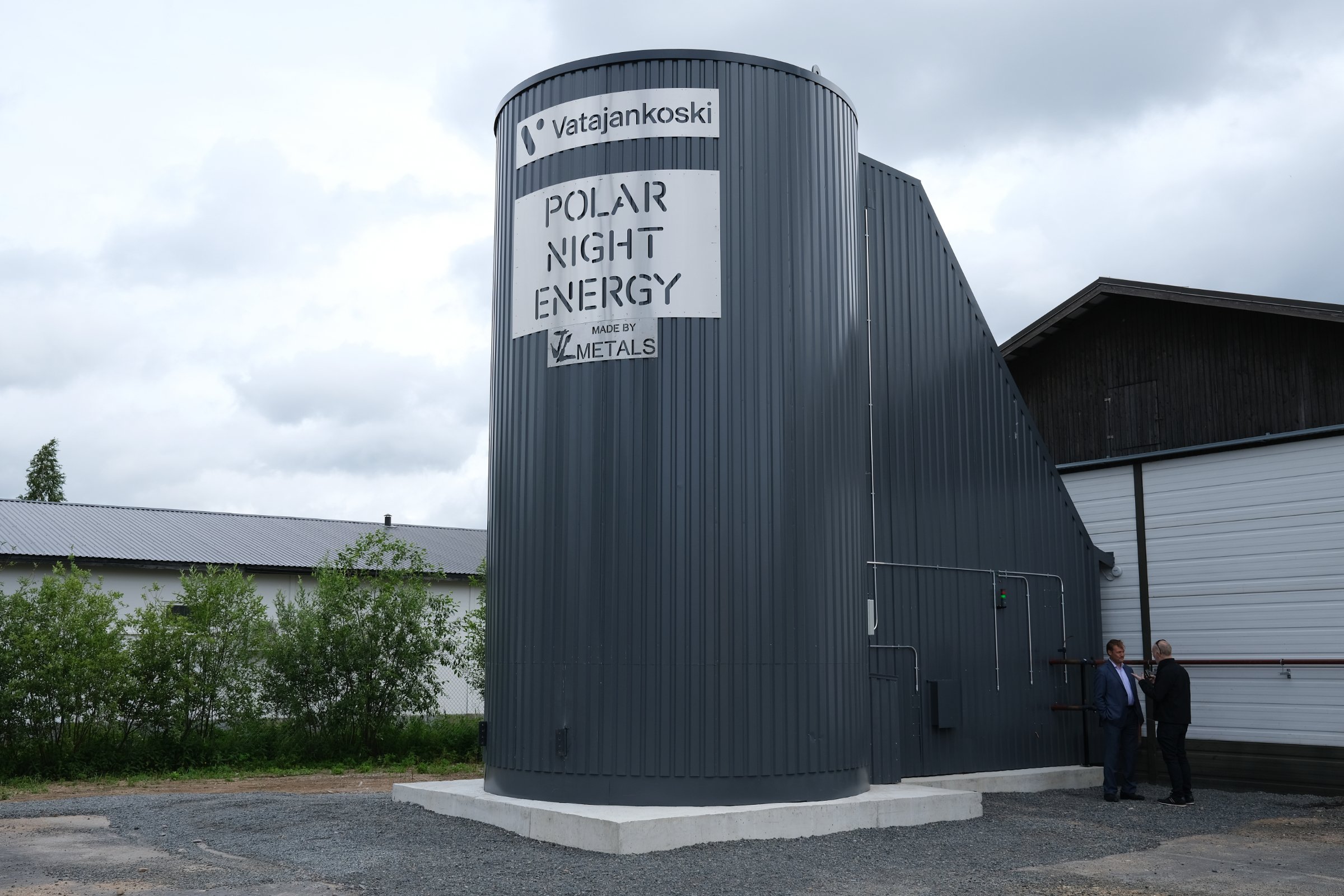Yes, the world might face shortage of sand. No, the sand battery won’t make the problem worse. Polar Night Energy’s Data Scientist explains how the sand battery is a perfect match for circular economy.
Polar Night Energy’s sand battery is a high temperature thermal energy storage that uses sand or sand-like materials as its storage medium. It stores energy in sand as heat.
We use sand because it allows a wide temperature range with storage time from hours to months. It is also affordable, non-toxic and can be locally sourced.
Meanwhile, we are about to face a crisis of sand shortage. Extraction of sand is an enormous unregulated business and rarely sustainable. (1)
We have been asked whether our technology is only making the problem worse. The short answer is no, and the next four points explain why.
1. The sand battery can use all sorts of sand
Sand is a key element in concrete, and hence vital for modern construction. A good quality concrete requires sand which has certain grain size distribution and shape, which is why sand is extracted even from coastal ecosystems rather than deserts.
However, our technology is flexible: the sand battery can use sand with varied mineral composition, very wide range of grain size distributions, and no restrictions to microscopic characters of the sand grains. This enables the usage of materials that are locally and commonly available, or even considered as waste.
We like high density, low-cost materials that are not from scarce sources. Someone else’s dirt could be our heat storage medium.
2. Mine waste volumes are overwhelming
Most of the substance extracted in mines needs to be disposed of. Only a small fraction of the material is utilized, and the rest is left to lie in heaps. Since mines can operate for decades, they are often accompanied with mountains of waste rock in their backyards.
In many cases this waste could be used to store energy in our sand batteries. And believe me, there are enough of heaps to build all the sand batteries we need.
Based on the estimate of Mission Innovation, 737 TWh of energy will need storage in 2030. (2) Let’s imagine that we would store all that energy in our sand batteries (a silly thought, since even if a sand battery is great for many applications, it can never fulfill all the storing needs. Imagine a few tons of sand battery in the trunk of your Tesla!).
Nevertheless, building all these sand batteries would require 200 million tons of sand or sand-like material, and the sand batteries would serve for decades. For comparison, 500 million tons of mining waste was produced only in EU during the year 2020. (3)
3. Mining industry seeks ways to direct mine waste streams into usage – we are happy to help
Mine waste is not only poorly utilized but causes many problems from land usage to soil contamination. The mining industry is now looking for solutions to this environmental hazard: ever larger portion of the wall rock streams is directed to circular economy, and we are actively searching opportunities to collaborate.
Mine waste volumes are too large for our sand batteries to completely tackle this problem, but we can do our part. At very least, no new mines are needed to fill sand batteries.
4. Our system is robust and safe
The design life of the storage is tens of years. All the materials used in construction of the system are recyclable and non-toxic. Even the storage medium will be reusable.
As our sand battery can be connected to existing infrastructure, building a combustion-free solution is straightforward and cost-effective.
To mitigate climate change, we desperately need solutions to store energy from weather dependent renewable sources, such as solar and wind. If we want these solutions to thrive, they need to be environmentally and socially sustainable as well as economically viable – like our sand battery.
Or as Donald Sadoway puts it: “If you want to make something dirt-cheap, make it out of dirt. Preferably dirt that’s locally sourced.” (4)
Text: Terhi Moisala, Data Scientist
Sources:
1 UNEP: Our use of sand brings us “up against the wall”, says UNEP report
2 Mission Innovation: Sand-Based High Temperature Seasonal Heat Storage by Polar Night Energy Oy, Avoided Emissions Framework – Level 2 version 0.8 assessment, 2020
3 Eurostat: Waste statistics
This article was conducted under the project NewSETS – New energy storages promoting sustainable energy transition in societies.
This project has received funding in the framework of the joint programming initiative ERA-Net Smart Energy Systems’ focus initiatives Smart Grids Plus and Integrated, Regional Energy Systems, with support from the European Union’s Horizon 2020 research and innovation programme under grant agreements No 646039 and 775970.
The content and views expressed in this material are those of the authors and do not necessarily reflect the views or opinion of the ERA-Net SES initiative. Any reference given does not necessarily imply the endorsement by ERA-Net SES.












